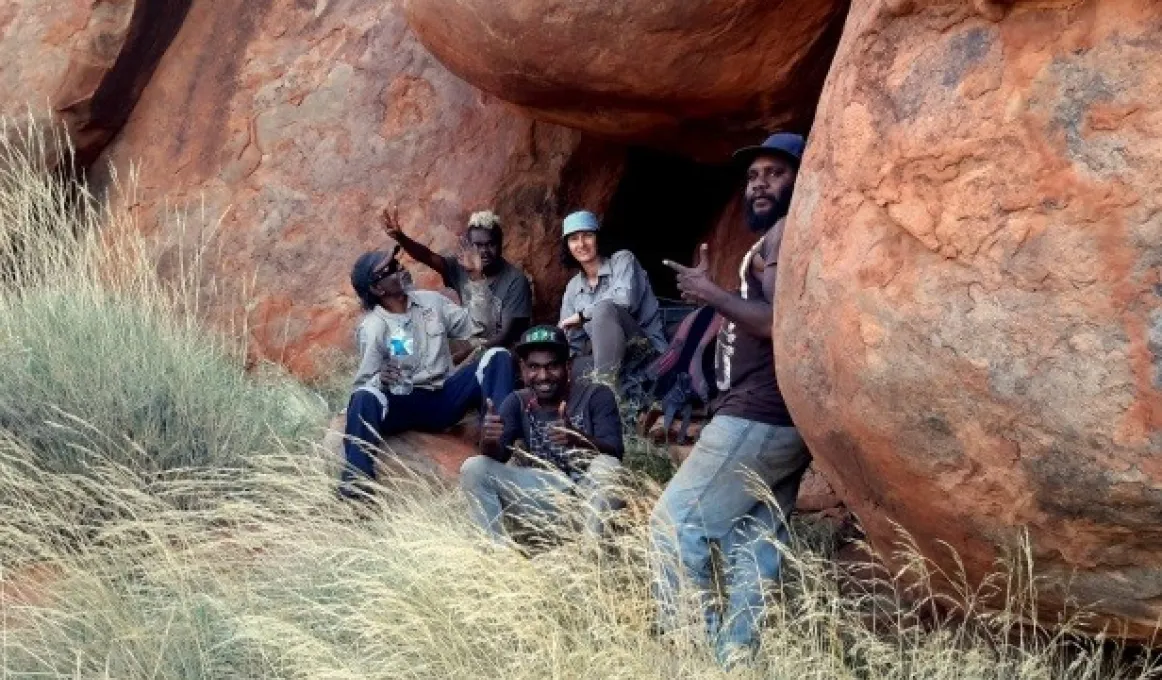Saving the Warru (black-footed rock-wallaby)

The black-footed rock-wallaby (warru) was nearing extinction in northern South Australia until the creation of the Warru Recovery Team, made up of Indigenous rangers and scientists. The recent release of 25 warru into the wild comes at the end of intensive breeding, preservation and feral predator control.
After more than a decade of conservation efforts, the black-footed rock wallaby - otherwise known as warru - is being re-introduced into parts of Australia where feral predators had wiped them off the map.
Historically, the warru roamed across parts of South Australia, Western Australia and the Northern Territory. However, introduced species such as feral cats, foxes and buffel grass gradually pushed them to the brink of extinction.
In 2007, the very real concern that warru could become extinct in South Australia led to the formation of the Warru Recovery Team. This is an ongoing partnership between traditional owners of the Anangu Pitjantjatjara Yankunytjatjara (APY) Lands, various communities and government agencies.
The Warru Recovery Team’s work is based on the knowledge that recovery of warru will lead to broader landscape scale environmental benefits. The team includes Indigenous rangers and scientists and their activities include monitoring warru survival rates, predator control, fire management, weed management, and management of the predator enclosure.
The program also seeks to drive positive social change in APY communities by providing training and employment opportunities to local residents.
After several years of consolidating and building the warru population, the team is now returning the wallaby back to an area north of Pukatja, in a rocky outcrop named Wamitjara, in the APY Lands in South Australia's far north.
As part of the breeding and population growth preparation, a 100 hectare predator-proof warru enclosure – known as the ‘warru pintji’ (warru fence) – was constructed in 2010. This helps the captivity-bred warru safely acclimatise and adapt to local conditions. The site was chosen through full consultation with the Warru Recovery Team and traditional owners, informed by a combination of local knowledge and scientific criteria. The warru pintji was constructed entirely by local Anangu and warru rangers.
Since 2011, more than 15 warru raised in captivity at Monarto Zoo near Adelaide, have been released into the warru pintji, and free breeding is now taking place.
The Australian Government has recently provided a $200,000 grant under the National Landcare Program for the recent translocation exercise where 25 warru from the pintji were trapped, transported and released approximately 30 kilometres away.
Australia’s Threatened Species Commissioner Gregory Andrews accompanied the rangers on the exercise, praising their dedication.
"It's a big job but it's immensely rewarding” Commissioner Andrews said.
The warru have been identified as one of 20 mammals targeted for recovery by 2020 under the Threatened Species Strategy and Indigenous Rangers are critical to their recovery”, Commissioner Andrews said.
“By fighting extinction for species like the warru, we’re actually protecting what it means to be Australian."
The warru recovery program now employs more than 20 warru rangers.
Find out more
Supporting Indigenous rangers in their work to preserve threatened species is a priority for the Australian Government. The Australian Government funds the Anangu Pitjantjatjara Yankunytjatjara (APY) Land Management to undertake activities to support the Black-footed Rock-Wallaby Recovery Program within the Musgrave and Tomkinson Ranges on the APY Lands.
The Warru Recovery Team is an ongoing partnership between traditional owners of the Anangu Pitjantjatjara Yankunytjatjara (APY) Lands and the communities of Kalka, Pipalyatjara, Pukatja and Kenmore Park on the APY Lands. It includes Indigenous Rangers, the National Landcare Program, South Australian Government Natural Resources Alinytjara Wilurara, APY Land Management, Ecological Horizons Pty Ltd, Conservation Ark (Zoos SA), and the University of Adelaide.
Read more at warru recovery program and view the official preview to the full documentary Saving Warru to be released in Spring 2017.
Past stories include Rare rock wallabies returned to outback.